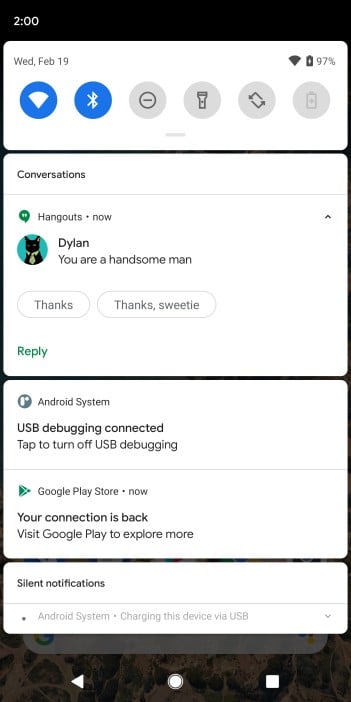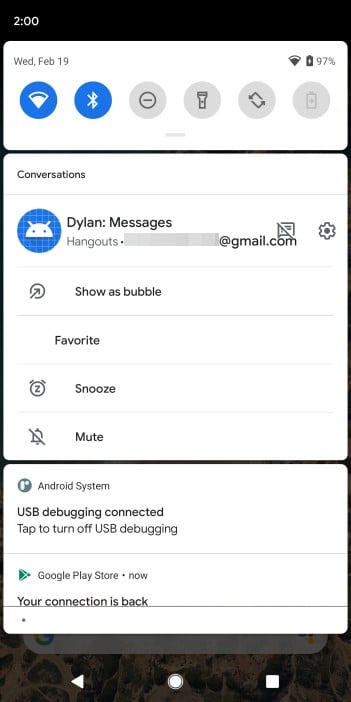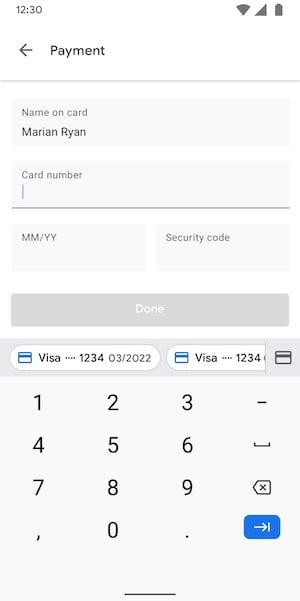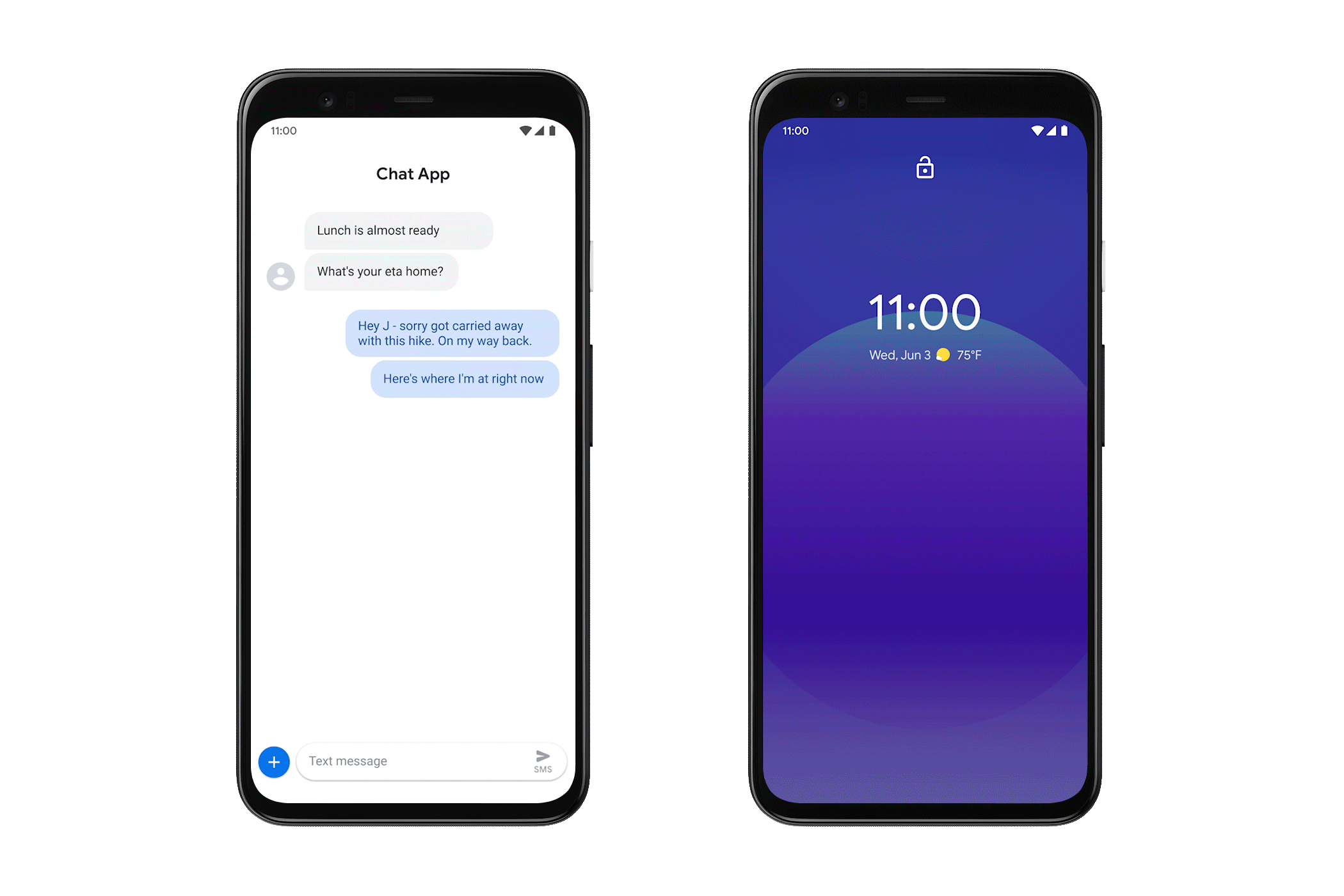Android 11 is the next major Android version update, and the first public beta for the update was scheduled to be released following an online event on June 3, 2020. Because of the current civil unrest in the U.S., Google chose to postpone the online launch event, although the first beta accidentally ended up arriving on some users’ phones anyways. Now, Google has announced that the online launch event has been fully cancelled. But fret not, for the Android 11 Beta 1 is still moving forward. Google has officially released the first beta for Google Pixel phones, bringing along several new changes focused around the key themes of People, Controls, and Privacy.
The first Android 11 Beta is available today with final SDK and NDK APIs and new features to try in apps. If
you have a Pixel 2, Pixel 3, Pixel 3a, or Pixel 4 device, you can enroll yourself with Google to get Android 11 Beta updates over-the-air directly to your device. As always, downloads for Pixel and the Android Emulator are also available, in case you want to sideload the latest update.

Google is also redesigning the Play Console and adding new features to Android Studio, Kotlin, and Jetpack. You can read all about these other changes in our other article.
Download Android 11 Beta 1 for Google Pixel devices
Before we get to the changelog, you can download the Android 11 Beta 1 for supported Google Pixel devices from the following links:
Google Pixels
| Device, Codename, XDA Forums | OTA | System Image |
|---|---|---|
| Pixel 2 (walleye) | Link | Link |
| Pixel 2 XL (taimen) | Link | Link |
| Pixel 3 (blueline) | Link | Link |
| Pixel 3 XL (crosshatch) | Link | Link |
| Pixel 3a (sargo) | Link | Link |
| Pixel 3a XL (bonito) | Link | Link |
| Pixel 4 (flame) | Link | Link |
| Pixel 4 XL (coral) | Link | Link |
GSI Downloads
| x86+GMS | Link |
| ARM64+GMS | Link |
| x86_64 | Link |
| ARM64 | Link |
To make things easier, you can install the Beta using the Android Flash Tool rather than manually flashing via recovery or fastboot.
Note: We will be updating this chart as the download links go live.
Changes in Android 11 Beta 1
Google’s press release does not independently list all of the changes introduced in Android 11 Beta 1. Instead, the press release takes a zoomed-out view of the changes that will be seen with the next Android OS version. Keep in mind that we have already had access to Android 11 Developer Preview 1, Preview 2, Preview 3, Preview 4, and recently, even Beta 1 before today’s release. So if you have been following our coverage closely, all of the following changes may not seem new to you.
Android 11 Beta 1 rolled out early to some Pixel 4 users: Here’s what’s new
Google is focusing on three key themes with Android 11: People, Controls, and Privacy.
People
Our smartphones have evolved to serve a multitude of functions, but one of its primary functions remains that of building connections and maintaining communication with people. Android 11 will thus attempt to realign the OS to be more people-centric and expressive.
Conversation Notifications
Android 11 will come with a dedicated section at the top of the notification shade that’s reserved specifically for conversations. The design is said to be “people-forward”, and the notification itself will offer conversation-specific actions such as opening the conversation as a bubble, creating a conversation shortcut on the home screen, or setting a reminder.
Conversation Notifications from Developer Preview 1
Conversation Notifications were first spotted oi Android 11 Developer Preview 1. In addition to the usual contextual replies for the actual conversation, we can also spot action areas for snooze, mute, favorite, and to view the conversation in bubbles.
Bubbles
Speaking of bubbles, Android 11 goes big on messaging chats heads with the Bubbles API. Messaging and chat apps “should” use the Bubbles API for notifications to allow users to keep their conversations in view and accessible while multitasking.

Bubbles were introduced in Android 10 as a developer option, but we’ve known Google intends to do more with them. Bubbles notifications have been enabled by default since Android 11 Developer Preview 1, as in, you no longer need to enable the option in Developer Options anymore.
In Android 11 Beta 1, Google has added a new submenu for enabling Bubble notifications. This submenu is present over at Settings > Apps & Notifications > Notifications > Bubbles.
Consolidated Keyboard Suggestions
This lets Autofill apps and Input Method Editors (IMEs) securely offer context-specific entities and strings directly in an IME’s suggestion strip, where they are most convenient for users.
From the sound of it, consolidated keyboard suggestions will be allowed to offer their stored entries directly to a keyboard app’s word suggestion bar. We’ll be exploring how this feature works, in greater detail, soon.
Voice Access
It’s easy to take touchscreen interaction for granted, but there is a subset of users who find touchscreen usage cumbersome, difficult, or impossible. These users rely on accessibility commands to navigate their smartphone through voice commands. Android 11 now includes an on-device visual cortex that understands screen content and context and generates labels and access points for accessibility.
Controls
This section focuses on the connected home ecosystem, placing Android at the command center of all other smart devices.
Device Controls API
The Device Controls API is one of Android 11’s highlight features. In this Android version release, users will be able to access and control their connected devices in a quick and easy manner by simply long pressing the power button.
Here’s the animation that plays on that page pic.twitter.com/hCmS8ShaO1
— Mishaal Rahman (@MishaalRahman) June 1, 2020
The Controls API lets developers put home automation shortcuts in the power menu. In earlier previews of Android 11, there was a “Quick Controls” section underneath the row of power menu items up top while the rest of the power menu is transparent.
In Android 11 Developer Preview 4, the power menu background was dark, including the power menu items up top. Furthermore, “Quick Controls” now said “Device Controls” and there was a description text when the field was empty that said “Add controls for your connected devices”. When you added controls from a supported app, this text disappeared to make room for your favorite controls.
Android 11 Beta 1 brings the new “Power Menu” settings to all, which will control the cards & passes and Controls features within the Power Menu.
The Google Home app already supports Android 11’s Device Controls API. Users have been able to get devices from the Google Home app to show up in the power menu on Developer Preview 4, and you should be able to do the same on Beta 1 as well.
Media Controls
Media Controls makes it quick and convenient for users to switch the output device for their audio or video content, letting them choose between connected devices such as device speakers, headphones, external speakers, TVs, etc. This ability can be enabled from Developer Options in Beta 1, and Google promises that the feature will be on by default in an upcoming Beta release.
We spotted hints of multi-device audio switching in Developer Preview 2. And now, Google has formally announced the same. Note that certain Android skins already allowed you to choose the output device, and now, this functionality has arrived on stock Android.
Privacy
Google’s focus on OS-wide privacy continues with Android 11.
One-Time Permissions
As the name implies, Android 11 allows users to grant single-use, one-time permission access to apps that request access to the device’s microphone, camera, or location. The next time that the app needs to access these device features, it needs to request those permissions once again.
The feature was first spotted in Developer Preview 1, and it allows the user to temporarily grant an app access to a permission so long as that app is in the foreground. Once the user navigates away from the app, the app loses access to that permission and must request it again. This is different from the Android 10 behavior—on Android 10, users could grant the location permission to apps “while the app is in use”, which means that one could do it only for the location permission and that the app would have location access every time it was opened. One-Time Permission is a narrower working area and covers more permissions.
Permissions Auto-Reset
Building upon the thought of an average user not remembering to revoke permissions of an app after its use, Android 11 will auto-reset all the runtime permissions of an app and notify the user if the app has not been used for “an extended period of time”. The app can request the permissions once again the next time the app is used.
This feature addition was first spotted in Developer Preview 3 and looks to be on its way to inclusion in further Betas.
Background Location
Google had found that many apps were accessing location data in the background without actually having any real need for it. Consequently, in February 2020, Google announced that app developers seeking background location access would need approval from Google in case they want to list their apps on the Play Store. So developers were encouraged to assess whether their app really needed access to background location and if this need was for a valid reason.
Previously, Google had announced timelines for enforcing this new change. All new apps submitted from August 2020 onwards and all existing apps from November 2020 onwards would need to have their background location access approved or the app listing will not go live/will be removed. Google is now extending the timeline, but only for enforcing the policy for existing apps, giving developers time until 2021 to get their approval in place before their listing is removed.
This change is actually independent of Android 11 as the apps will be removed from the Google Play Store entirely. But it does tie into the overarching theme of privacy and permission management within this Android release.
Google Play System Update — Project Mainline modules
One of the biggest changes in Android 10 for newly launched devices was the introduction of Project Mainline. The purpose of Project Mainline is for Google to wrest control of framework components and system applications that are critical to security and maintaining development consistency away from OEMs. Each Mainline module is encapsulated as either an APK or an APEX file and is updateable by Google through the Play Store. The user sees updates as a “Google Play System Update” (GPSU) on their device, and updates are released on a regular cadence as a train (ie. they’re downloaded and installed at the same time).
Google mandates the inclusion of specific Mainline modules, which at the time of Google I/O 2019, included 13. With Android 11 Developer Preview 1, Google mandated a total of 20 Mainline modules.
Now, with Android 11 Beta 1, Google has mandated a total of 12 Mainline Modules in addition to the ones present on Android 10. The total is now at 25 modules.
Developer Friendly Changes in Android 11 Beta
This is not one of the main focus heads for changes within Android 11, but it forms one for the Beta releases since the update is specifically targeted towards app developers. These changes are as below:
- Gated breaking changes until developers target Android 11, so the changes won’t take effect until you explicitly change your manifest.
- Added a new UI in Developer Options to let you toggle many of these breaking changes for app testing (as spotted in January 2020).
- Added a new Platform Stability release milestone where all API and behavior changes will be complete so that app developers can finalize app updates with the knowledge that the platform itself is stable.
- Wireless ADB Debugging (as predicted in October 2019, and then, as spotted in Developer Preview 2)
- Along with a Quick Settings tile (as spotted in Developer Preview 4)
- ADB incremental for faster installs of large APKs (as spotted in Developer Preview 4)
- More nullability annotations on platform APIs to catch issues at build time instead of runtime.
These are only the changes that Google mentions in their announcement, but there are bound to be more changes they haven’t specified. We already dug up a few when Android 11 Beta 1 was accidentally rolled out, such as the Quick Settings Media Controls which have not been mentioned in the announcement. Now with the updates available to us on our Pixel smartphones, we’ll be in a better position to locate more changes. Stay tuned!
The post Android 11 Beta goes live for Google Pixel phones with Device Controls API, Bubble notifications, and much more appeared first on xda-developers.





